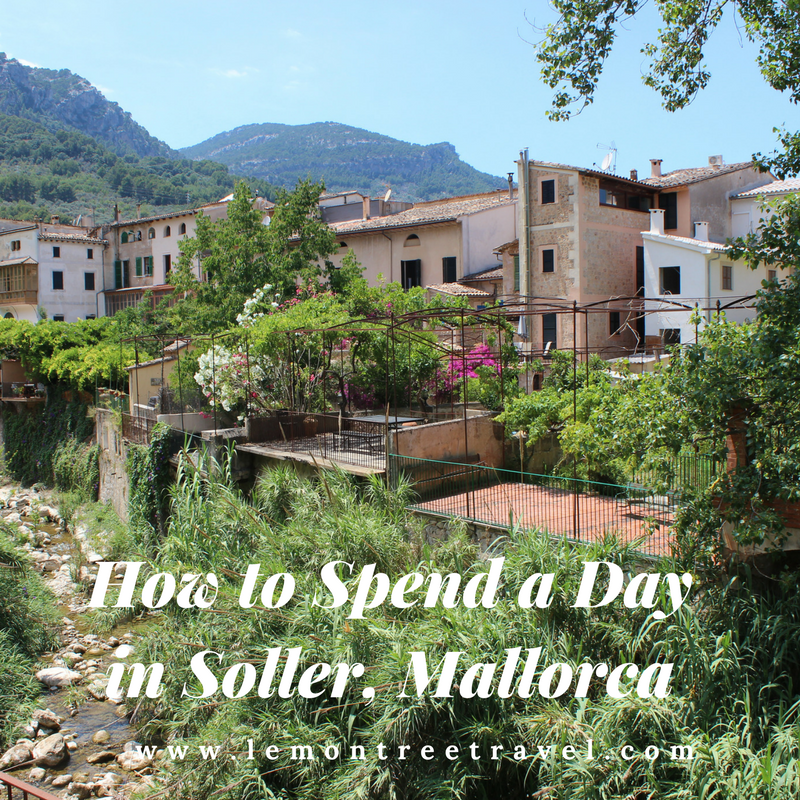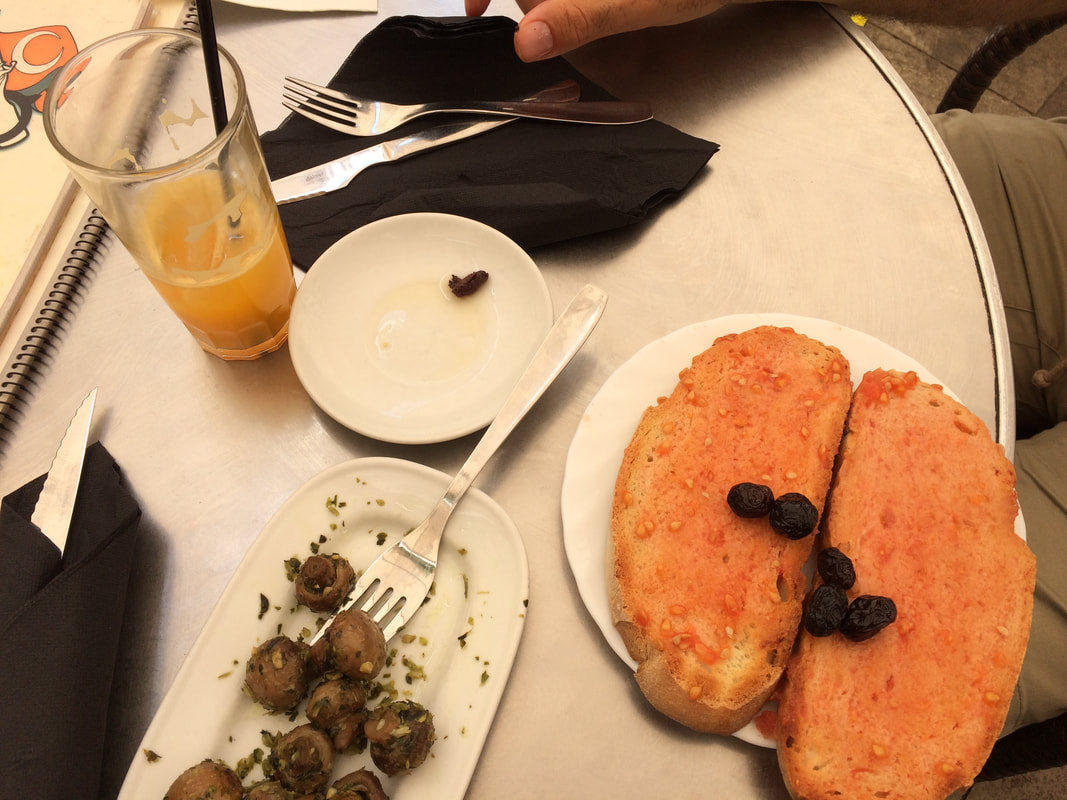Walking through the ancient cobblestone streets, history comes alive, with its first inhabitants migrating in 5200 BC the Talayotic Times. Since its origins, Soller suffered many attacks from Algerian Moorish Pirates, resulting in countless battles between the Moors and the Christians. In the 1800’s, Soller became one of the leading exporters in olives and citrus fruit.
The main town is separated from the Port of Soller, but connected via tram. Note that siesta occurs in the afternoon, so it best to visit in the morning to beat the heat and experience the best of what Soller has to offer.
In 1912, the rail link from Palma to Soller was built, and in 1914 tram lines linked Soller with the Port of Soller to aide in the export of oranges. Travelers can rent a car, but I recommend taking the historic train from Palma to Soller.
Tickets are not as cheap as they used to be (approx. $35 USD), and the train ride is loud, but worth the journey from cosmopolitan Palma to quaint and quiet Soller. Sit in plush, leather vintage seats, and discover the sites of Mallorca’s back country and Tramuntana mountains packed with olive and citrus trees.
Upon exiting the train, head to the main square, Placa Constitucio. This is the perfect place to sip on a refreshing, freshly squeeze orange juice. The many street side cafes overlook the Sant Bartomeu cathedral. Walkers be aware of oncoming traffic from the trams! Vegetarians should try the orange juice, sauteed mushrooms and tomato toast. While at the plaza, discover an architectural wonder at the Banco de Soller.
This 13-Century Baroque church turned “modern” in 1904 thanks to the artwork of Joan Rubid, an ex pupil of Gaudi. It’s not the most impressive church in Mallorca, but it has its charm.
Beyond the main plaza and shopping area, discover the ancient streets and neighborhoods of Soller to admire the traditional homes, decorated with potted flowers. One of my favorite neighborhoods in Pueblo de Fornaluxt. On some residential streets, the only thing you’ll see is the cat down the road. Notable streets include Calle Isabel II, Cristofol Colom and Gran Via avenue to discover some of the best “orange money” homes in town.
If you have time, I recommend selecting from at least one the following options:
Soller Botanical Gardens
Meander through various pathways lined with lush flora and fauna from the Balearic and Canary Islands as well as Sicily, Malta, Crete, Corsica and Sardinia. Also onsite is an ecological farm and orchard aimed for studying and preserving traditional vegetable and fruit trees. The gardens also preserve frozen seeds for endangered plants.
Ecovinyassa
This citrus grove farm is one of the most precious places in Soller. It's what Soller is about - lemon and orange trees. Whether you want to sit underneath a lemon tree, or photograph the oranges, this is the place to discover the heart and soul of Soller.A reservation is required to visit the farm, but enjoy a self-guided tour and end your journey with a freshly squeeze orange juice and tapa snack. Don't go empty handed, be sure to take home a lemon or orange, jam, tea or herbal kit, made directly from Ecovinyassa's bio (organic) oranges and lemons.
Tram to Harbor
At the same arrival point, take a local tram to the Port and Soller's waterfront. The tram is approximately seven euros and takes 20 minutes each way. Here, sachet through the sandy beach or admire the harbor. The choice is yours and there is no lack of sun worshiping.
What's your favorite thing to do in Soller? Let us know!
This Lemon Tree article is now featured on GPSmyCity. To download this article for offline reading or travel directions to the attractions highlighted in this article, go to How to Spend a Day in Soller, Mallorca.


















 RSS Feed
RSS Feed